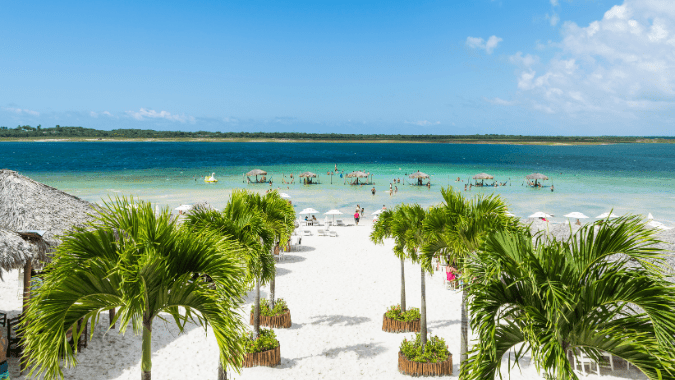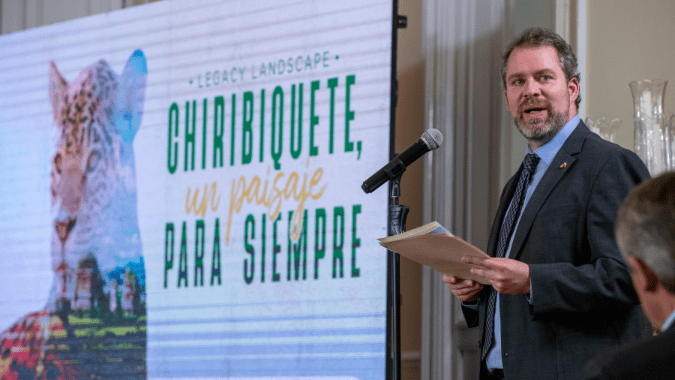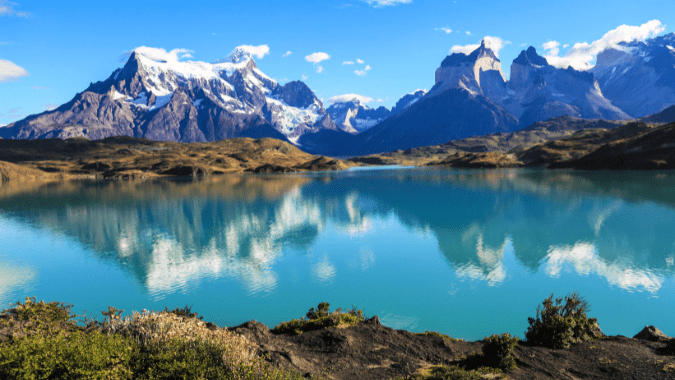Argentina
South American Rhythms: Everything you need to know about music in Argentina
Tags:
The cultural diversity in Argentina is one of the most interesting aspects of this South American country. Buenos Aires, its capital, is a city full of museums, theaters, and festivals of all kinds and even hosts open-air exhibitions with the most diverse artistic expressions. Music in Argentina is probably the best example of this diversity and in our article we cover the southern rhythms that every traveler must experience to fully enjoy the charm of this vast country. [caption id="attachment_12826" align="aligncenter" width="675"]![Rhythms]() The Tango is the most well-known musical rhythm of Argentina[/caption]
The Tango is the most well-known musical rhythm of Argentina[/caption]
![Rhythms]() Nightclubs in Buenos Aires have Argentine cumbia; you can not lose this![/caption]
Nightclubs in Buenos Aires have Argentine cumbia; you can not lose this![/caption]
![Rhythms]() The San Telmo and Mataderos Markets offer a very authentic gaucho show[/caption]
The San Telmo and Mataderos Markets offer a very authentic gaucho show[/caption]
Argentine music is inexhaustible and apart from these rhythms that are part of its cultural essence, the country has wide and varied options for concerts and festivals. Lovers of classical music can’t miss the shows at the Teatro Colón, both those that take place in its auditoriums and those that are organized outdoors in the plaza that faces the theater. Jazz fans should note the week of November 14 to 19, 2018 in their calendars; the days of the International Jazz Festival in Buenos Aires. Throughout the year you can also enjoy live shows at several jazz clubs such as: Notorious (Av. Callao 966, near the Microcentro), Virasoro (Guatemala 4328, Palermo) or Thelonious (Nicaragua 5549, Palermo). Another noteworthy event is the Emerging City Festival, which this year will be held from September 19 to 23, 2018, where music, film, art, fashion, comedy, poetry, dance and street art bring the Recoleta Cultural Center to life. Schedule your festivals and live the best travel experiences in Buenos Aires and every province of Argentina.
 The Tango is the most well-known musical rhythm of Argentina[/caption]
The Tango is the most well-known musical rhythm of Argentina[/caption] National rock
In the mid-1950s, American rock began to penetrate the minds of young Argentine musicians. Some groups started making covers of songs from international bands, but in the 1960s the "national rock" was born, with its own lyrics and styles, which had an enormous influence on the rest of the Latin American youth. Since then, dozens of groups and names have emerged such as Luis Alberto Spinetta, Charly Garcia, Fito Páez, Pedro Aznar, Patricio Rey and his Redonditos de Ricota, and Gustavo Cerati with Soda Stereo, one of the most important groups in Argentina and Latin America. Rock music runs through the veins of Argentina, the only country that developed a national rock culture in the region and that gained popularity in the 1980s. So make the most your trip and have your senses ready to enjoy this musical rhythm. In Buenos Aires, there are dozens of bars that pay homage to national rock, among them Rodney Bar (Rodney 400 y Jorge Newbery, Chacarita neighborhood), Mitos Argentinos (Humberto Primo 489, San Telmo neighborhood), El Emergente (it has two venues: Acuña Figueroa 1030, in Almagro, and Gallo 333, in Abasto), Makena Cantina Club (Fitz Roy 1519, Palermo) and Niceto Club (it has two venues: Niceto Vega 5510 y Humboldt 1358, in Palermo).Argentine Tango
It’s impossible to bring up tango and not think of Argentina. The sound of the bandoneon and the spectacle that results from this dance characterized by its seductive movements are irresistable. The tango comes from multiple musical rhythms that began in the Río de la Plata and merged with the music of native people. There is a bit of influence from Spain, Italy, the Middle East and Africa, so it’s the best demonstration of the importance of immigration to Argentina. Born in the 19th century, it’s become the favorite dance in the most popular neighborhoods in Buenos Aires and Montevideo. It was declared as an Intangible Cultural Heritage of Humanity by Unesco and is one of the cultural activities in Argentina that no traveler should miss. There are outdoor tango shows in Buenos Aires tourist areas such as Florida Street and Dorrego Square in San Telmo. The tango shows in the famous and traditional tango houses in the city offer an unparalleled experience and there are options to suit all preferences and budgets. Reserve your tango show in Buenos AiresCumbia
Cumbia was already around in the 1970s but at the end of the 20th century, in the midst of the economic crisis in South America, the famous cumbia villera was born, a side of this musical rhythm starring musicians from the poorest sectors of Buenos Aires society. Their songs spoke of the violence and the precariousness experienced in the towns of Buenos Aires at the end of 1990 until about 2010. Nowadays, cumbia is listened and danced to in all sectors of society and its lyrics have also diversified. [caption id="attachment_12824" align="aligncenter" width="675"] Nightclubs in Buenos Aires have Argentine cumbia; you can not lose this![/caption]
Nightclubs in Buenos Aires have Argentine cumbia; you can not lose this![/caption] Folklore
The main musical rhythms of Argentine folklore were born in the countryside and came into the big cities during the 30's and 40's. By 1950 it had become the most popular musical genre for Argentines along with tango. Among the most important genres are chacarera, payada, the milonga campera, malambo, the murga porteña, chamamé and zamba. The City of Buenos Aires hosts multiple cultural spaces where you can dance to all these rhythms and every Saturday and Sunday there are dance performances in fairs and parks. The San Telmo and Mataderos Markets on Sundays offer a very authentic gaucho show, and those who prefer something more lively can take a Buenos Aires Milongas Tour and enjoy the show with professional dancers. Travel tip: The estancias located in the outskirts of Buenos Aires also have a space dedicated to Argentine folklore, so it’s an excellent option for spending a day in the country and discovering the most outstanding aspects of Argentine culture. Contact our team of Daytours4u experts and request a customized folklore tour [caption id="attachment_12825" align="aligncenter" width="675"] The San Telmo and Mataderos Markets offer a very authentic gaucho show[/caption]
The San Telmo and Mataderos Markets offer a very authentic gaucho show[/caption] Argentine music is inexhaustible and apart from these rhythms that are part of its cultural essence, the country has wide and varied options for concerts and festivals. Lovers of classical music can’t miss the shows at the Teatro Colón, both those that take place in its auditoriums and those that are organized outdoors in the plaza that faces the theater. Jazz fans should note the week of November 14 to 19, 2018 in their calendars; the days of the International Jazz Festival in Buenos Aires. Throughout the year you can also enjoy live shows at several jazz clubs such as: Notorious (Av. Callao 966, near the Microcentro), Virasoro (Guatemala 4328, Palermo) or Thelonious (Nicaragua 5549, Palermo). Another noteworthy event is the Emerging City Festival, which this year will be held from September 19 to 23, 2018, where music, film, art, fashion, comedy, poetry, dance and street art bring the Recoleta Cultural Center to life. Schedule your festivals and live the best travel experiences in Buenos Aires and every province of Argentina.
By: Daytours4u Content Team
Tags:
Search
-
Exciting 4x4 route: São Luís and FortalezafromUS$1,014
-
Vila Gale Mares Resort All InclusivefromUS$100
-
Ecotourism in Chapada DiamantinafromUS$672
-
All inclusive Vila Gelé Cumbuco ResortfromUS$999
-
Full Day Cafayate Tour from SaltafromUS$68
-
Transfer Aeroparque - Buenos AiresfromUS$46
-
-
Transfer Ezeiza - AeroparquefromUS$91
-
-
Excursion to El Chaltén from El CalafatefromUS$154
-
-
-
-
-
-
-
-
-
-
-
-
Daytours4u © 2012-2019. Use of this website constitutes acceptance of the Terms & Conditions.
Open Chat
Hello, How May I Help You?



